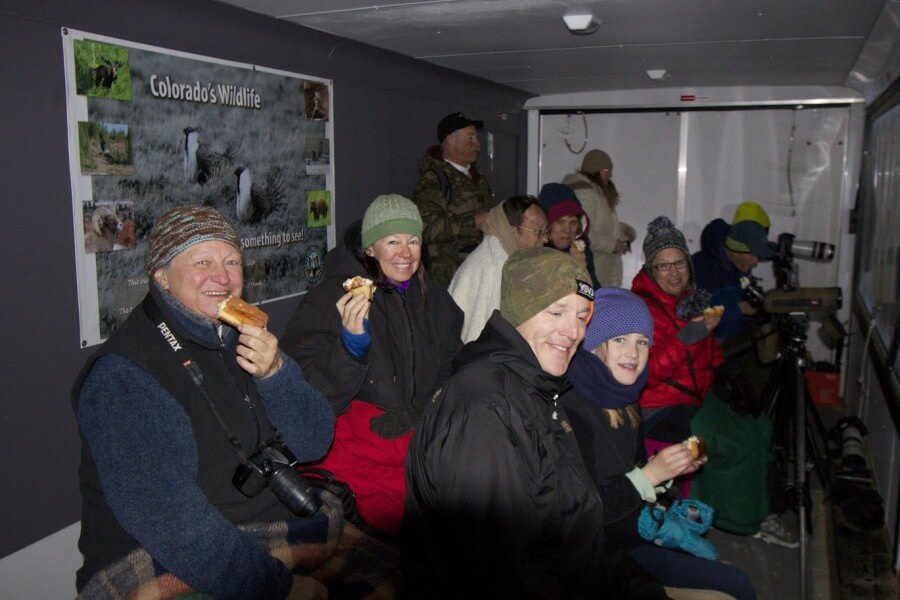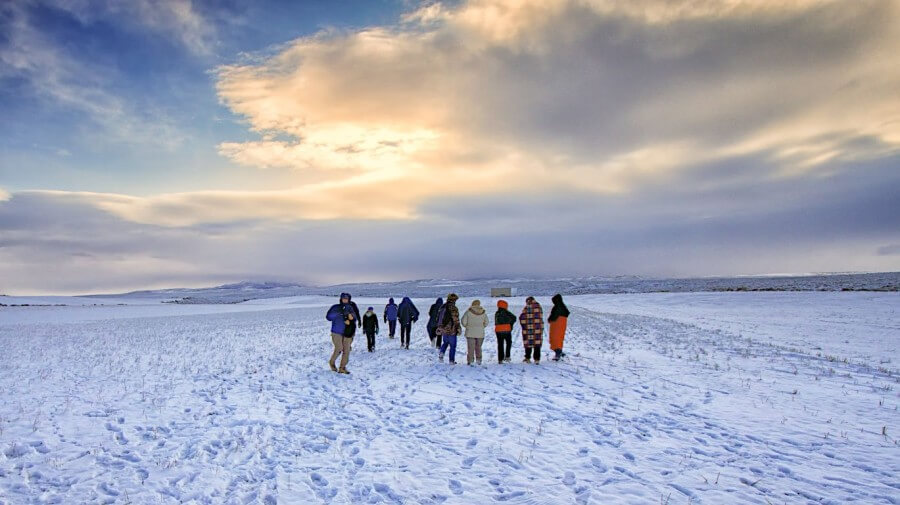Written by Jim Masure
Conservation Colorado’s Greater Sage Grouse Tour offers photographers a unique opportunity to capture very special inhabitants of our earth – the Greater sage grouse. The tours take place on a “ lek”, which is an ancestral strutting ground which the birds instinctively return year after year. I was fortunate to take two trips in three years and would love to do it again. Taking a camera and photographing these nearly-extinct birds will make you realize how important the earthly elements are to survival. Watching the birds through my lens, it is dramatically evident how important our environment is to us all.
If you are lucky enough to go on tour, here are my top five tips for photographers (and grouse watchers):
1. Dress warmly:
 It is winter and you should expect to be cold. But trust me, at the end of the day, your senses will be rewarded with such a special event and you will tell the story over and over. Be ready for a great adventure — the staff will greet you and be very upbeat even with the very early morning. They will drive out of Craig some 30 miles or more as these special birds need a lot of space. So bring your best attitude for this new adventure and be ready to go.
It is winter and you should expect to be cold. But trust me, at the end of the day, your senses will be rewarded with such a special event and you will tell the story over and over. Be ready for a great adventure — the staff will greet you and be very upbeat even with the very early morning. They will drive out of Craig some 30 miles or more as these special birds need a lot of space. So bring your best attitude for this new adventure and be ready to go.
2. Bring a long lens if you’ve got one:
The bird itself is stunning with its umbrella of feathers and unique color patterns. Huge bags protrude from under its bill and bounce when making the mating call. I have a 400 prime lens and use a tripod for the bird shots as it is very dark at the start of this event. If hand holding a camera, crank the ISO up to get the shutter speed a little faster and open the aperture as big as one can get.
3. No flashing the sage grouse:
No flash photography is allowed. Flashes of light send the grouse flying away, you will walk home early, and the fellow guests may not let you back in the car for the ride home.
4. It’s not all about long lenses:

Sure, that’s the lens for the Greater sage grouse, but the landscape and vistas will be just as amazing. Go with whatever lens you have and enjoy this special experience. As the sun rises it will become clear that the vistas are just as amazing. In addition to sage grouse, photographers will most likely see other important species of the sagebrush – like elk, mule deer, pronghorn antelope – all of which need healthy sagebrush to survive.
5. Take time to absorb the sage grouse experience:
Greater sage grouse survive in huge expanses of sagebrush, which is disappearing with oil and gas roads, pesticides, and other human caused disturbances on our open spaces. Try this trick: pinch a few sprigs of sage between your fingers and just smell the aroma of the west. It will stop you in your tracks just long enough to be in the moment. Without clean water, air, and a few other things that let us live here, neither you and me, nor the Greater sage grouse, can survive.
Now that you have tips to take great images while on tour, please consider sharing images and your support for our work to save the sage grouse on social media!
#SageGrouse
#COpolitics
View the amazing images by following Conservation Colorado on Facebook, Twitter and Instagram.



